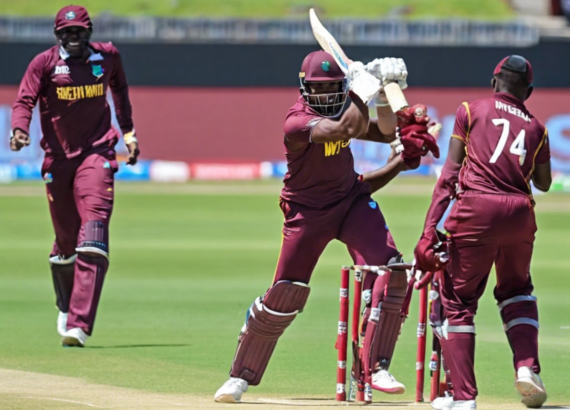When the winter chill begins to wane and the vibrant hues of spring start to peek through the frosty landscape, it’s time to celebrate the harvest season with Happy Lohri! This ancient and joyous festival is primarily observed by the Punjabi community and falls on the same day every year, on the 13th of January. Lohri marks the end of the winter solstice, signifying longer days and the onset of a new agricultural cycle. It is a time of deep reverence for the Sun God, as well as a celebration of the abundance and prosperity bestowed upon the land.
History and Legends of Lohri
The origins of Lohri are deeply rooted in Punjabi culture and history, with various legends and myths associated with this vibrant festival. One popular legend revolves around Dulla Bhatti, a heroic figure who lived during the reign of Emperor Akbar. He was known for his acts of kindness and bravery, protecting the poor and oppressed. During Lohri celebrations, people sing folk songs praising Dulla Bhatti and commemorate his legendary deeds.
Customs and Traditions
Bonfire: A central aspect of Lohri celebrations is the lighting of bonfires at sunset. People gather around the bonfire, offer prayers to the Sun God, toss sesame seeds, popcorn, jaggery, and peanuts into the flames, and sing traditional songs and dance to the beat of the dhol.
Singing and Dancing: Lohri is incomplete without lively music and dance performances. People dress in their finest traditional attire, gather in groups, and perform the energetic bhangra and gidda dances. The infectious beats of the dhol create a jubilant atmosphere, filling the air with laughter and merriment.
Feasting: No festival is complete without delicious food, and Lohri is no exception. Families and friends come together to indulge in a sumptuous feast that includes traditional Punjabi dishes like sarson da saag, makki di roti, dal makhani, and gur–rewri. The warmth of the bonfire adds to the culinary delights, making the feast a truly memorable experience.
Significance of Lohri
Lohri holds immense cultural and social significance in Punjabi society. It is a time to foster community bonds, express gratitude for the bountiful harvest, and seek blessings for a prosperous future. The festival also symbolizes the triumph of good over evil, light over darkness, and warmth over cold – metaphorically marking the victory of positivity and hope.
Celebrating Lohri in the Modern Age
In today’s fast-paced world, the essence of Lohri continues to resonate with people of all ages. While the traditional customs and rituals remain at the core of the celebrations, modern interpretations have added new dimensions to the festival. From organizing Lohri parties with contemporary themes to embracing eco-friendly practices by using natural materials for the bonfire, the spirit of Lohri lives on in innovative ways.
Tips for a Memorable Lohri Celebration
- Decorate with Color: Adorn your home and surroundings with vibrant colors, traditional motifs, and rangoli designs to create a festive ambiance.
- Dress to Impress: Wear traditional Punjabi attire like salwar kameez, phulkari dupattas, and juttis to evoke the spirit of Lohri.
- Share the Joy: Invite friends and family to join in the celebrations, exchange gifts, and spread the warmth and cheer of the festival.
- Create a Playlist: Curate a playlist of popular Punjabi songs and upbeat music to keep the festive mood alive throughout the celebrations.
- Capture the Moments: Take photos and videos to preserve the memories of this special occasion and cherish the joyous moments for years to come.
Frequently Asked Questions (FAQs) about Lohri
What is the significance of the bonfire in Lohri celebrations?
The bonfire in Lohri symbolizes the energy and vitality of the Sun God, whose blessings are sought for a prosperous harvest and a fruitful future. It also represents the collective spirit of the community coming together to celebrate in unity.
How can I involve children in Lohri festivities?
You can engage children in Lohri celebrations by involving them in traditional activities like dancing bhangra, making handmade decorations, and teaching them folk songs related to the festival. Encourage them to participate in the bonfire lighting ceremony under adult supervision.
What are some traditional sweets prepared during Lohri?
Makki ke Roti & Sarson ka Saag: A classic combination of maize bread and mustard greens, a staple of Lohri feasts.
Gur ki Roti: Sweet bread made with jaggery, flour, and ghee, enjoyed as a dessert during the festival.
Gajak & Rewri: Crispy treats made with sesame seeds, sugar, and nuts, distributed among family and friends as a symbol of sweetness and abundance.
Can non-Punjabis celebrate Lohri?
Yes, Lohri is an inclusive festival that welcomes people from all backgrounds to partake in its festivities. It is an opportunity to celebrate diversity, exchange cultural traditions, and share the joy of the harvest season with everyone.
What are some modern twists to traditional Lohri celebrations?
- Themed Lohri parties with dress codes and décor based on specific concepts.
- Eco-friendly bonfires using organic materials like dried leaves and wood instead of plastics.
- Virtual Lohri celebrations for long-distance friends and family members through video calls and online activities.
How is Lohri different from other harvest festivals in India?
Lohri is primarily celebrated in the northern regions of India, especially in Punjab, Haryana, and Delhi, with a focus on bonfires, communal gatherings, and bhangra dances. Other harvest festivals like Pongal in South India and Makar Sankranti in various states have their unique rituals and traditions associated with the harvest season.
What is the role of women in Lohri celebrations?
Women play a central role in Lohri celebrations by preparing traditional delicacies, decorating the house, singing folk songs, and performing the gidda dance. They symbolize prosperity, fertility, and the nurturing spirit of Mother Earth, adding grace and beauty to the festivities.
Lohri is not just a festival; it’s a feeling of togetherness, gratitude, and exuberance that transcends generations. As the bonfire crackles and the dhol beats echo in the air, Happy Lohri becomes more than just a greeting – it becomes a celebration of life’s abundance and the timeless traditions that bind us together in joy and harmony. Let this Lohri be a reminder of the warmth of community, the richness of culture, and the promise of brighter days ahead.






